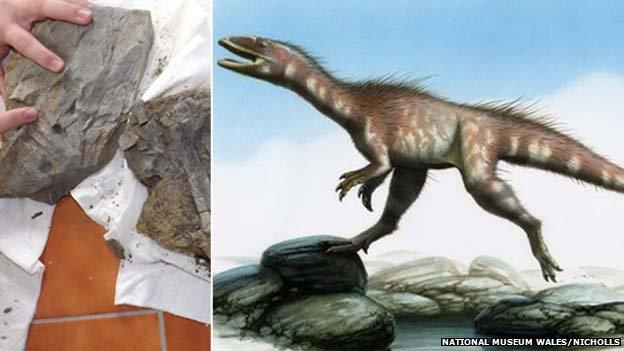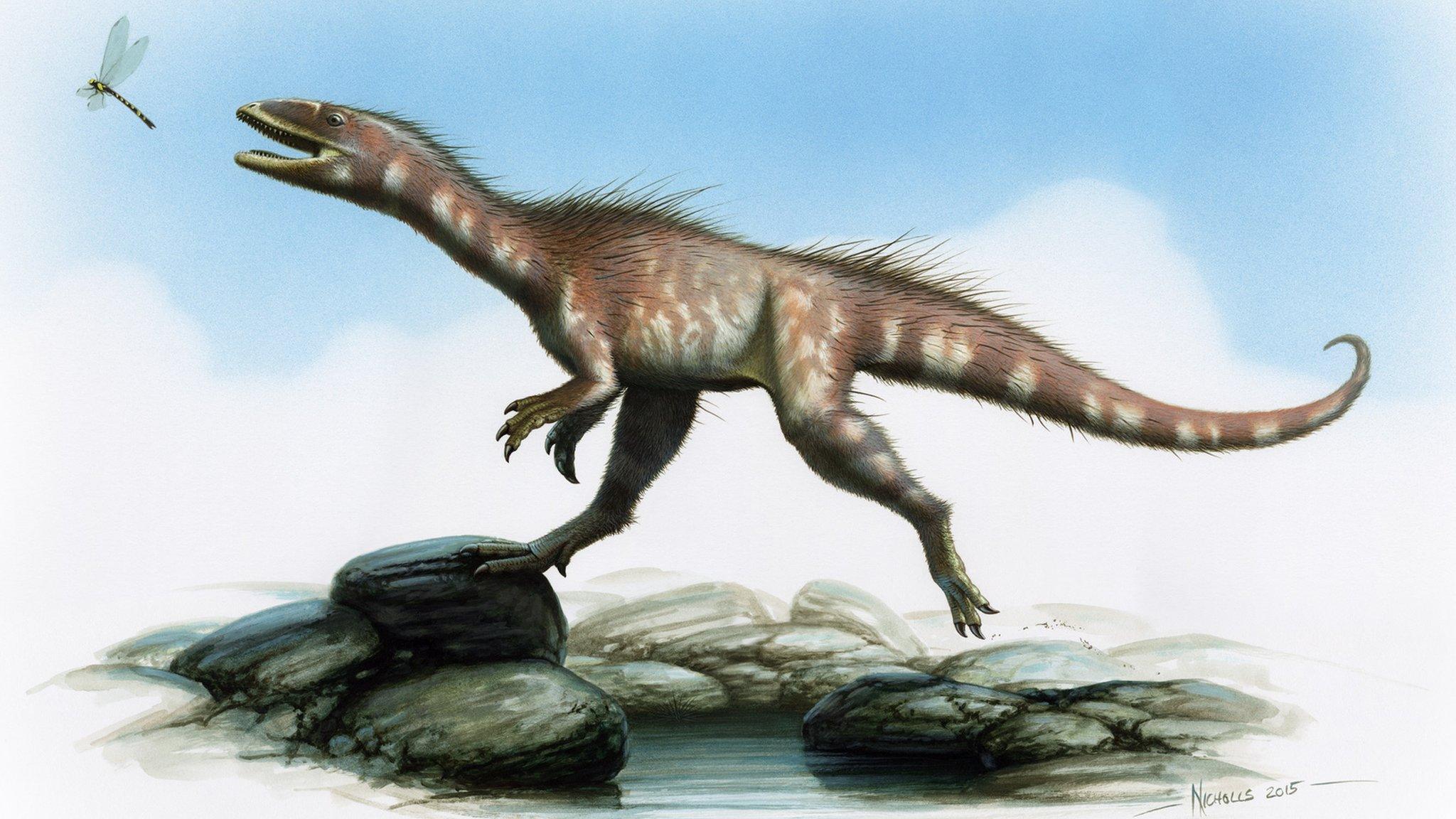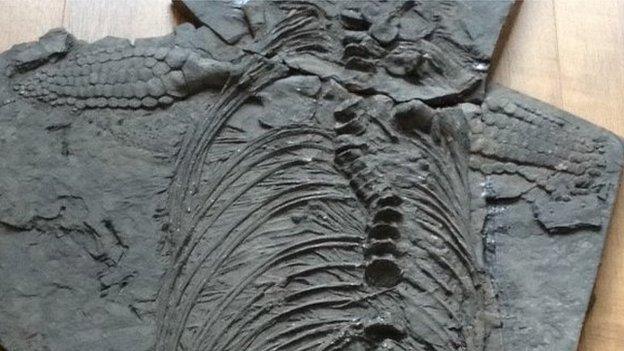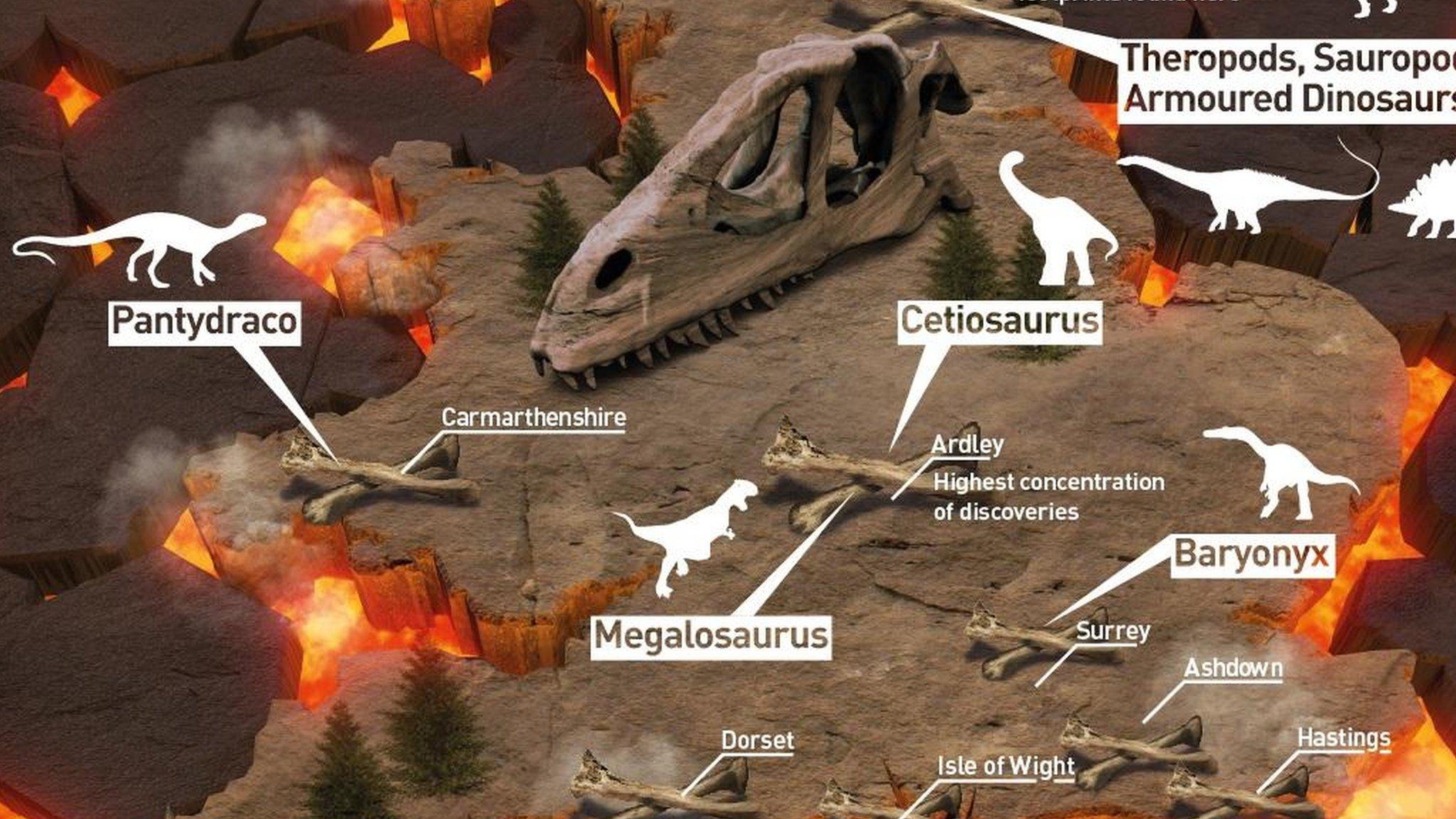Fossilised dinosaur's foot found on Lavernock beach
- Published

Wales' first Theropod was found at Lavernock beach in 2014
The fossilised foot of a dinosaur has been discovered on a south Wales beach, National Museum Wales has announced.
A skeleton of a meat-eating Jurassic dinosaur, the theropod, was uncovered by spring storms at Lavernock beach, Vale of Glamorgan, in 2014.
The dinosaur's missing foot was found at the beach by palaeontology student, Sam Davies, of Bridgend, at the beginning of this month.
"My first reaction was that I was very lucky," he said.
The fossilised skeleton of the theropod - a distant cousin of the giant Tyrannosaurus rex - went on display at the National Museum Cardiff's main hall in June after it was found by fossil-hunting brothers Nick and Rob Hanigan.

Mr Davies, who studies at the University of Portsmouth, visited Lavernock, near Penarth, after his tutor told him its cliffs were rich with fossils.
He arrived only hours after a cliff fall had exposed the fossil and before it could be washed away by the tide.
'Pure luck'
"It was pure luck that I found it. It was just sitting on top of a slab of rock," he said.
His tutor, Dr David Martill, confirmed the find was the missing foot of the recently discovered dinosaur, after the student emailed a picture.

Sam Davies is a third-year palaeontology student
Dr Martill said: "This was a chance-in-a-million find and highlights how important it is to encourage fossil hunting in this country."
He said the specimen would help chart the evolution of dinosaur feet.
The foot has been donated to the Amgueddfa Cymru, which hopes to put it on display with the rest of the skeleton soon.
Dr Caroline Buttler, head of palaeontology at the museum, said: "The dinosaur found by Nick and Rob Hanigan is the first skeleton of a theropod found in Wales.
"Sam's find adds to its significance because we can learn more about the animal and how it is related to the dinosaurs that eventually evolved into birds."
- Published9 June 2015

- Published19 December 2014

- Published15 January 2013
